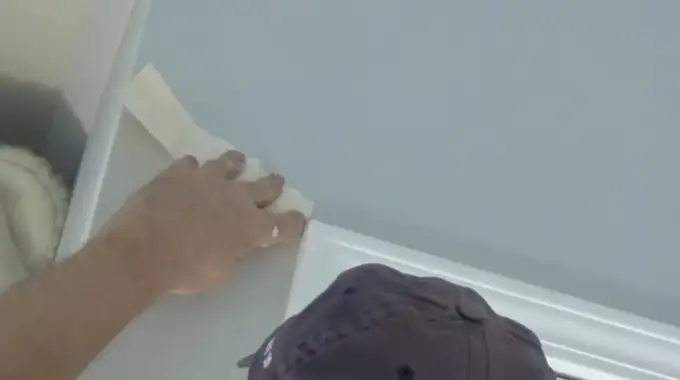Last Updated on March 29, 2023
Ever noticed a crack above your door when you stepped back? It’s a surprisingly common issue that can cause plenty of grief and require repair if it gets too out of hand. So why does drywall crack above doors in the first place?
Whether it’s poor installation or the settling of your foundations, drywall cracks above doors are common. Uneven frames and sagging floors can lead to stress being placed on those precious walls, causing memorable imperfections in no time at all.
Noticing those pesky drywall cracks above your door can be a total bummer. With the right material choice and proper installation, these cracking problems can be a thing of the past. So let’s take an in depth look at why these pesky issues occur above doors, plus how to avoid them.
Why Does Drywall Crack Above Doors: Common and Hidden Causes
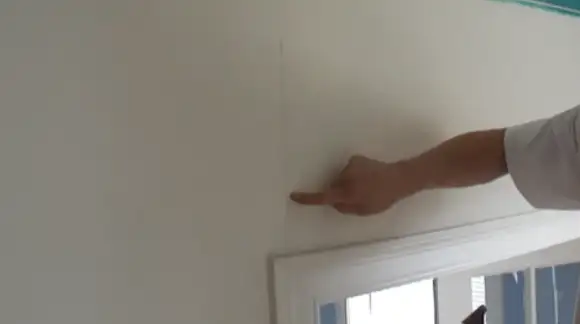
1. Impact of Temperature Changes on Doors
Drywall is highly sensitive to temperature changes, which can lead to cracking or warping above doors. When the temperature rises and falls rapidly, drywall is particularly susceptible to expanding and contracting due to heating and cooling cycles.
This movement can cause the drywall to pull apart around doorways, leading to cracks in the surface material above them. Changing humidity can also cause shrinkage of the drywall as moisture evaporates from it, resulting in cracks between joints.
2. Poor Structure of Doors
Cracks can also form above doors if they are not properly reinforced or installed correctly. If the doorway has been built without proper corner beads or tape, then it may not have adequate reinforcement against pressure from temperature changes.
Additionally, if there are inadequate fasteners used in the installation of the door frame, then it won’t be secure enough to resist movement which may cause cracking.
3. Faulty Construction Material Used for Walls and Doors
Construction materials with low structural integrity, such as gypsum drywall and softwood framing, may crack when exposed to sudden temperature changes. Due to their inability to withstand heat and cold, low-tensile plywood used for door frames or weak lumber used for jambs may crack.
4. Debris Accumulation in Door Joints
If there is excess mortar, caulking, grout, lint, or overtime, dust accumulates in door jamb gaps. As moisture accumulates in these crevices, it causes additional pressure to be put on the joints of the doorframe.
This excessive pressure can cause the drywall above the door to crack over time due to its inability to withstand the extra weight of the debris-filled gap.
5. Structural Deficiencies That Cause Cracks Above Doors
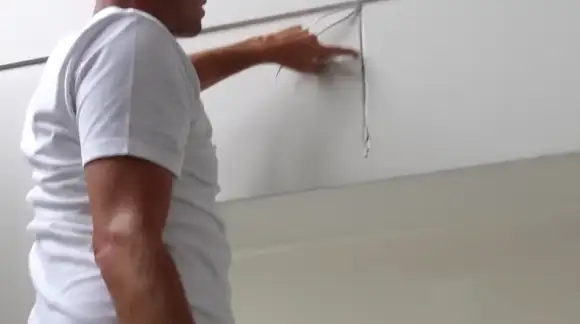
Structural deficiencies can also be a major contributor to cracks appearing above doors. Sagging roofs pulling on walls over time will cause uneven distribution of load throughout a house’s structure that may ultimately lead to cracking of drywall above doors.
6. Foundation Problem and Soil Movement:
When the walls of a building or home shift due to foundational and soil movement, drywall cracks can occur above doors. Changes in load-bearing capacity occur due to unstable soil beneath foundations or excessive moisture that affects soil consistency and stability.
A tree root pushing against the foundation or seismic activity near the area can also cause this problem. Water intrusion and swelling of wood frames will also result in cracks on adjoining walls when caulking or sealing between the wall and door frame is lacking.
Preventative Measures to Avoid Drywall Cracks Above Doors
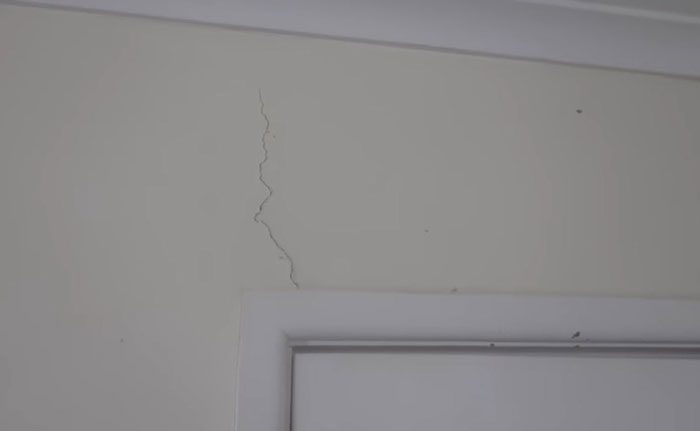
1. Use Quality Materials:
To prevent warping or premature deterioration, construct doors and frames with higher quality materials such as plywood and hardwoods for door jambs. Gypsum drywall should also be chosen for its high compressive strength to minimize cracking around doors and windows over time.
High-quality fasteners such as screws should be used instead of nails when attaching boards of gypsum drywall in order to provide a more secure installation overall. Nails are prone to coming loose over time due to vibrations or weight shifts, leading to drywall cracks above doors.
As an additional measure, use a joint compound between each sheet of drywall to ensure better adhesion, reduce movement from wind loads, and provide extra protection against cracks appearing at seams over time.
2. Install the Door Frame Properly:
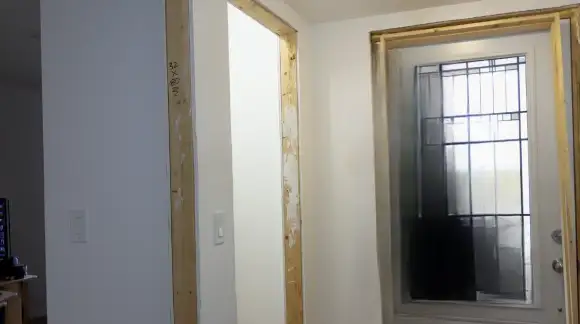
Before installing the drywall, ensure that the door and window frames are properly framed with 2×4 or 2×6 studs of appropriate size. Ensure enough space between the door casing and the wall for expansion and contraction of the door frame due to temperature fluctuations.
Check the door frame for plumb, level, and square to ensure it is properly installed. Also, ensure it is securely fastened to the header and side jambs. Additionally, ensure that there is no “bow” in the header, as this could cause cracking over time.
3. Install Wall Plates on Both Sides of the Door Frame:
Use wall plates on each side of the door frame to bridge from the top plate of the wall to either side of the jamb, creating a secure connection point for drywall installation. These drywall plates will prevent any movement in the framing around or above the door frame which can cause cracks in the drywall over time.

4. Install Corner Beads and Use Adequate Taping:
Make sure corner beads are installed at all external corners, as these provide extra strength and stability that help reduce the risk of cracking or other damage over time.
Use an adequate taping method at the seams. The drywall tape helps keep moisture out and prevents movement in the wall which can increase the likelihood of developing cracks in the drywall above doors.
5. Create an Expansion Gap Between Drywall and Door Casing:
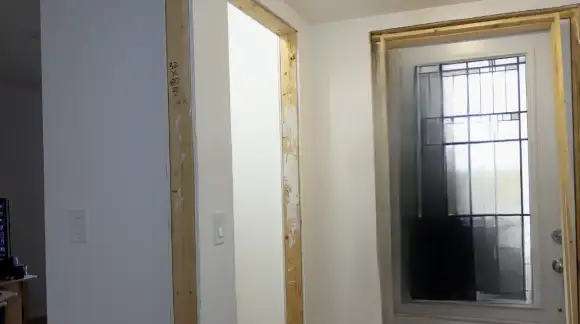
Install drywall boards and door casings with a small gap between them so they can expand in different temperatures without causing tension or cracks in the material. This space will also prevent wood trim from warping around doorways throughout the year.
6. Install Adequate Insulation Around Door Frame:
If possible, install some form of insulation around your door frames before covering them with drywall sheets. This will help absorb sound better than an uninsulated area and reduce thermal bridging which can cause cracking in the drywall over time due to temperature changes within walls/doors.
Use weatherstripping to help seal up any air gaps around doors that may be present after the installation of insulation and drywall sheets. This weatherstripping is necessary for proper energy efficiency inside buildings.
7. Install Drywall Properly:
For an even stronger installation, align all edges of drywall sheets properly with walls, using shims where needed between boards if gaps occur due to uneven framing on either side of a doorway or window frame.
Check each sheet before installing it by pressing inwards lightly with your hands. If any deflection is present, adjust accordingly before attaching them securely with screws rather than nails. To prevent cracking on exposed edges after installation, coat them with joint compound before installation.
You Can Also Check: Is a thinset suitable for stacked stone?
8. Monitor Temperature Changes inside the Home:
Installing a dehumidifier in the home can help to keep humidity levels in check by regulating the relative humidity and monitoring temperature changes. This system can help create an environment that is less conducive to drywall cracking due to excessive moisture in the air.
9. Regularly Clean Wall/Door Joints from any Debris Build-up:
Keeping wall and door joints clean should be part of your regular preventative measures for avoiding drywall cracks above doors. Dust, dirt, and other debris can accumulate in these areas over time causing joints to become clogged which can lead to drywall cracks.
10. Apply Mildew Resistant Coating on Exterior Surfaces:
Apply a mildew resistant coating on all exterior surfaces every two years to prevent drywall cracking caused by moisture seeping through exterior walls. The sealing of external surfaces reduces pressure on interior walls and prevents mold growth, which may cause structural damage.
11. Apply Caulk or Sealant between the Wall and Door Frame:

To prevent drywall cracks above doors, seal the gap between the wall and the door frame with caulk or sealant. This sealant helps stop air leakage around the door, which can cause damage to the drywall and eventually lead to cracks.
Apply the sealant in a thin line along any gap that exists between the wall and frame, including at the corners. Ensure that the sealant fills in any holes or gaps completely before allowing it to dry according to product directions.
Are Drywall Cracks Above Doors Normal?
Yes, some degree of cracking in the drywall above a door frame is normal. When doors are exposed to fluctuating temperatures, drywall can expand and contract due to the heat and cool air. This expansion and contraction can cause cracks in the drywall above the door frame.

Additionally, during more humid seasons, the drywall may shrink due to high moisture content in the air leading to further cracking of the drywall. If you notice wide cracks along the entire door frame, these might be signs of structural damage and should be investigated by a professional.
How Do You Know If Cracks Above Your Doors Are Serious?
You should take drywall cracks seriously that are wider than one-eighth of an inch or deeper than one-quarter of an inch. If the crack runs diagonally from the corner of the door to the top, this is also usually considered more serious than other types of cracking.
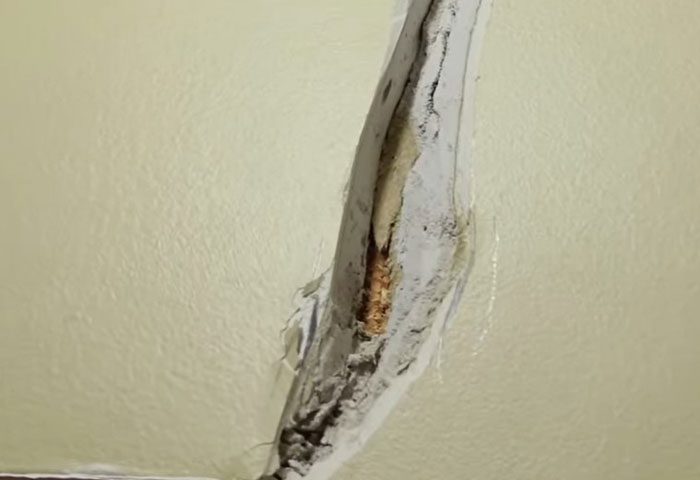
What’s Worse Vertical or Horizontal Cracks Above Doors?
Horizontal cracks above doors are typically more of a concern than vertical ones because they can indicate structural problems with the walls, door frame, or even the foundation. Since the vertical cracks follow the same line, it is not a serious issue.
A horizontal crack can also indicate shifting soil, water damage to the foundation, or even termite infestations. Additionally, horizontal cracks can quickly grow larger when left unchecked and become more difficult and costly to fix.
What Do Stress Cracks Look Like Above a Door?
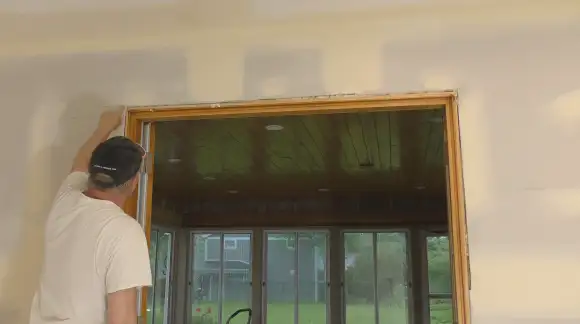
Stress cracks running diagonally from the top corner of a door may indicate pressure being exerted upon it from below due to settling foundations or other problems with the structure itself.
These kinds of cracks tend to appear wider at their base near where they meet the corner and gradually get narrower as they reach higher up toward the ceiling. They may also appear darker in color due to water damage caused by moisture seeping through from below.
Keep Drywall Cracks away and Hold a Good Appearance
Drywall cracking above doors can be an eyesore, but it doesn’t have to be permanent. With proper prevention and maintenance, you can avoid fixing stress cracks in your home’s drywall.
Identify any underlying issues that could lead to drywall cracking before they become an issue, such as excessive humidity or temperature changes. Make sure you keep an eye on the environment around your door frames to protect them.
You can repair existing cracks with patch kits or spackling paste, but avoiding them altogether is much better for both your wallet and peace of mind. Understanding the causes of these cracks and taking steps to minimize them can ensure your home looks good and holds its value.
